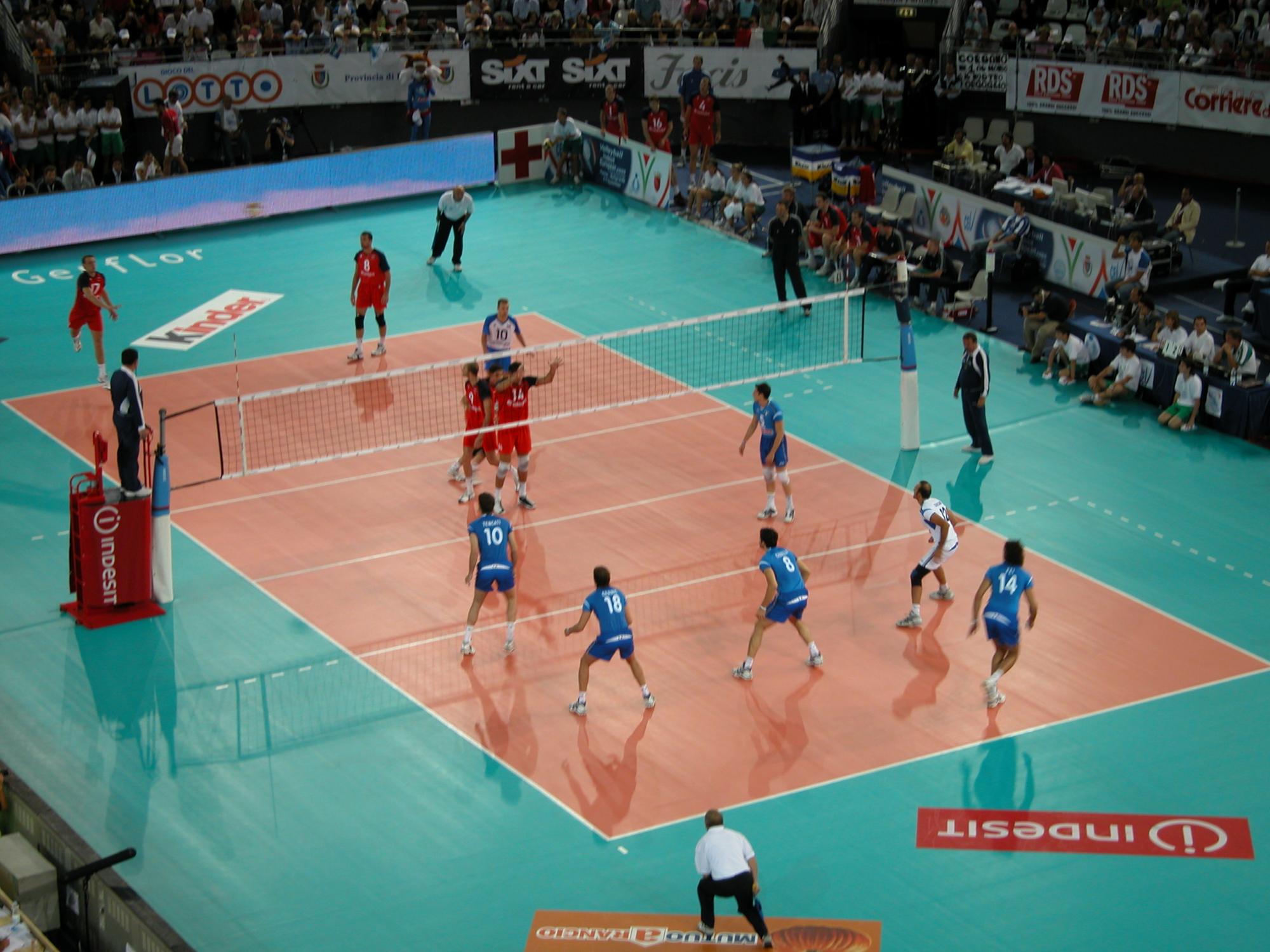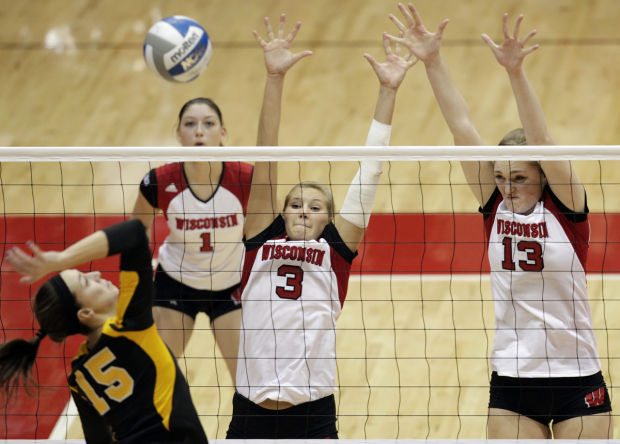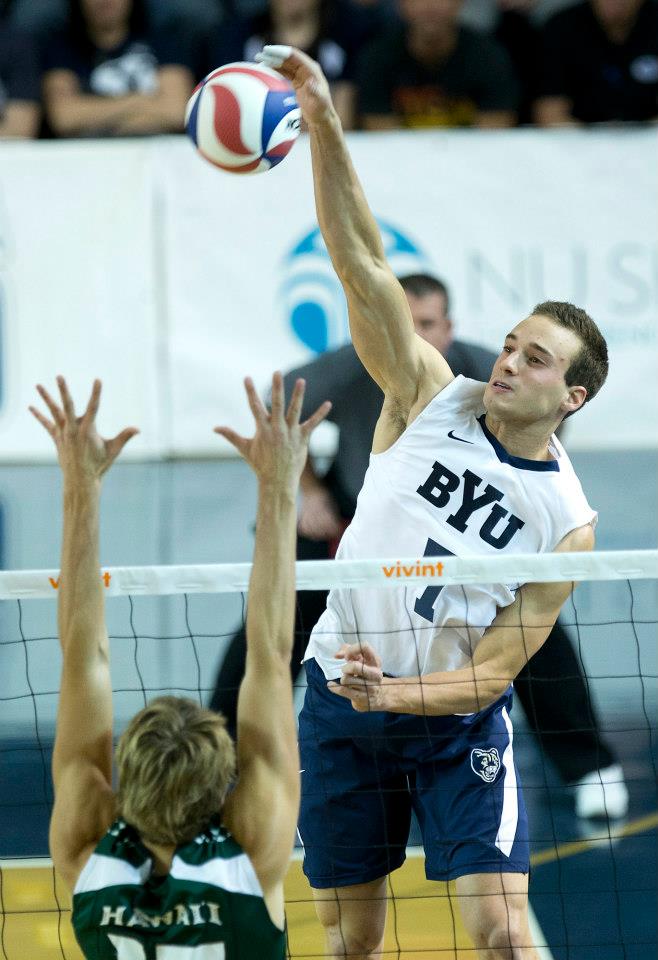Some basic rules:
There are six players on court in a volleyball team, who each must rotate one position clockwise every time their team wins back service from the opposition. Only the three players at the net positions can jump and spike or block near the net. The backcourt players can only hit the ball over the net if they jump from behind the attack line, also known as the three-metre line, which separates the front and back part of the court.
Volleyball has developed into a very specialised sport. Most teams will include in their starting line-up a setter, two centre blockers, two receiver-hitters and a universal spiker. Only certain players will be involved with service reception. Players will also have specialist positions for attack and defence. Substitutions are allowed during the game.
Formerly, a team could only win a point if it served the ball. Winning the serve back from the opposition was known as a side-out.Matches are played best of five sets. The first four sets are played to 25 points, with the final set being played to 15 points. A team must win a set by two points. There is no ceiling, so a set continues until one of the teams gains a two-point advantage. Previously, all sets were to 15 points, with the first four sets having a ceiling of 17 and the final set requiring at least a two-point winning advantage.
The libero cannot serve, spike the ball over the net or rotate into the front-line positions, but plays a vital role for the team in serve reception and backcourt defence. There must be at least one point played between a libero substituting off for a player and going back on the court for another player – hence he/she cannot be on the court for the whole game. The libero has added an extra dimension to backcourt defence, improving the reception of teams, lengthening the rallies and giving a vital role to shorter players.

A volleyball court is 18 m long and 9 m wide, divided into 9 m × 9 m halves by a one-meter wide net. The top of the net is 2.43 m above the center of the court for men's competition, and 2.24 m for women's competition, varied for veterans and junior competitions.
Players Positions:
Outside Hitter is the player who carries the serve receive responsibility along with the libero.
They often attacks the balls which setter sets to the antenna to the left side of the court.
Right side hitter: has the similar role than outside hitter, they play front row and back row and are carrying pass, attack, block, serve and defense responsibilities.

The opposite hitter: is the player who most often scores the most points in the team.
Opposite hitters don’t have the passing responsibilities. They stand behind the passers on the rotation while libero and outside hitters pass the ball and place themselves to the left front, right front or right back playing position.
Opposite hitters don’t have the passing responsibilities. They stand behind the passers on the rotation while libero and outside hitters pass the ball and place themselves to the left front, right front or right back playing position.

The setter: is the playmaker, point guard or the quarterback of the volleyball team A setter’s responsibility is to run the team’s offense and build up offensive scoring opportunities for the team.

Middle blockers: main responsibility is to stop the opponent’s offense.The middle blocker builds a block which stops the ball, or allows the team to dig the ball up.
They stop the opponent’s middle hitters or wing hitters in co-operation with teammates.
Middle blockers need to have great blocking, attacking and serving skills
They stop the opponent’s middle hitters or wing hitters in co-operation with teammates.
Middle blockers need to have great blocking, attacking and serving skills

The libero:is fairly new position in volleyball. The libero is a back row specialist who is allowed to play back court, thelibero wears a different color shirt in the team and is allowed to enter and exit the game without substitution request.
The libero can replace any player on the court and most often replaces middle blockers. 
Skills:
Serve:
A player stands behind the inline and serves the ball, in an attempt to drive it into the opponent's court. His or her main objective is to make it land inside the court; it is also desirable to set the ball's direction, speed and acceleration so that it becomes difficult for the receiver to handle it properly. A serve is called an "ace" when the ball lands directly onto the court or travels outside the court after being touched by an opponent.
Pass:Also called reception, the pass is the attempt by a team to properly handle the opponent's serve, or any form of attack.
Set:The set is usually the second contact that a team makes with the ball. The main goal of setting is to put the ball in the air in such a way that it can be driven by an attack into the opponent's court. The setter coordinates the offensive movements of a team, and is the player who ultimately decides which player will actually attack the ball.
Attack:The attack, also known as the spike, is usually the third contact a team makes with the ball. The object of attacking is to handle the ball so that it lands on the opponent's court and cannot be defended. A player makes a series of steps,jumps, and swings at the ball.
Block:Blocking refers to the actions taken by players standing at the net to stop or alter an opponent's attack
Dig:Digging is the ability to prevent the ball from touching one's court after a spike or attack, particularly a ball that is nearly touching the ground.

No hay comentarios:
Publicar un comentario